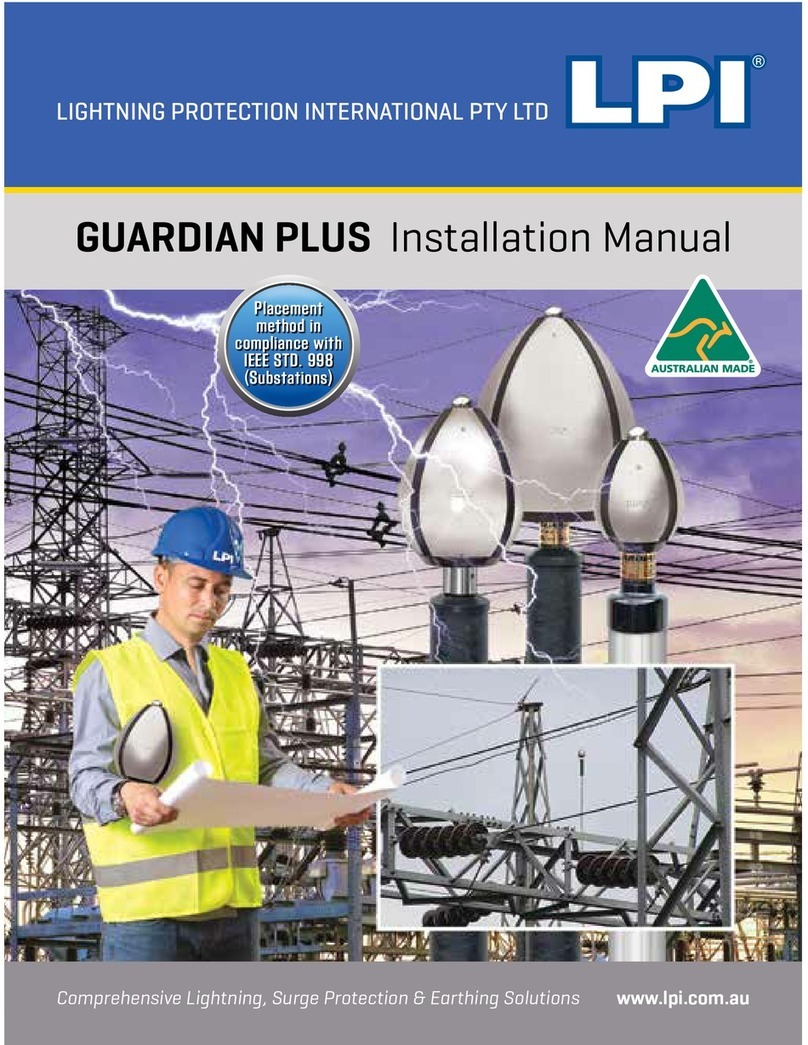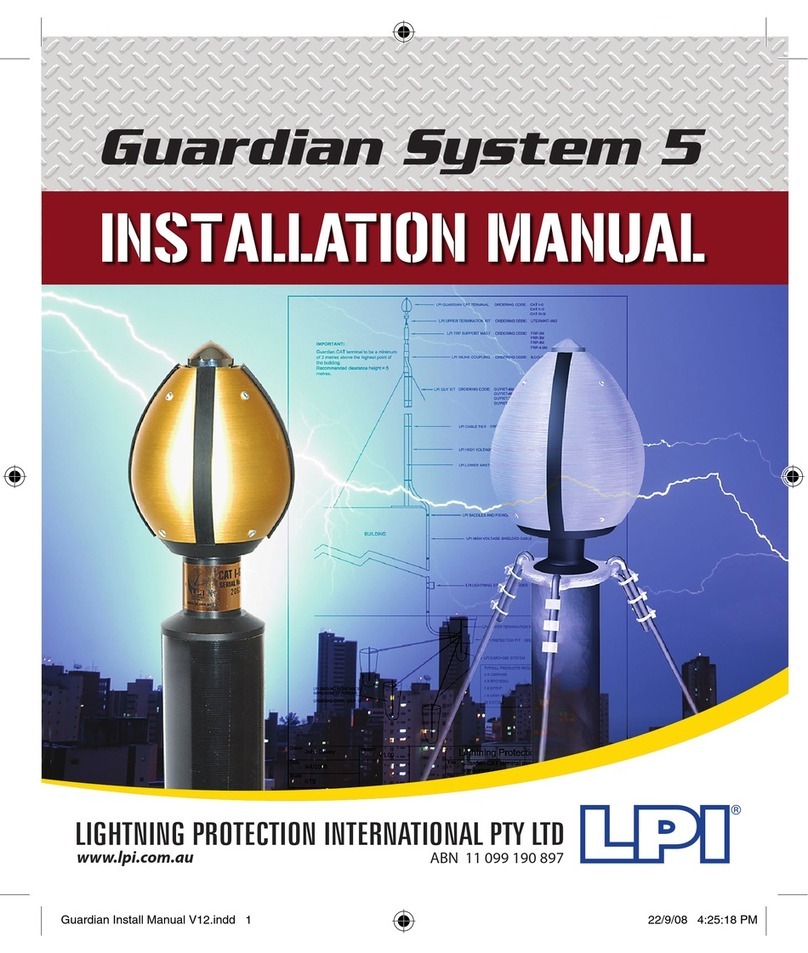Document:
LWS-MKIII Installation
and Operating Manual
Lightning Protection
International Pty Ltd
© Copyright 2012 LPI
Contents
Contents
...................................................................................................2-3
System Overview
................................................................................4
What is it? ..........................................................................................................4
What does it do? ............................................................................................. 4
Console ...............................................................................................................5
LWS Sensor Assembly .................................................................................. 5
Event Indication Levels ................................................................................ 5
Warning Indication ..................................................................................6
Alarm Indication ....................................................................................... 7
All Clear Indication ..................................................................................8
Optional Range Extenders ..........................................................................8
Installation
.................................................................................................9
Console Installation ......................................................................................9
Sensor Installation .........................................................................................9
Installation of Console / Console Antenna ........................................18
Approved Sensor Locations .................................................................... 20
Range Extender Installation .....................................................................21
Operation
.................................................................................................. 22
Accessing the Interface homepage ...................................................... 22
Event Log ........................................................................................................ 23
Saving in Internet Explorer ...................................................................... 24
Saving in Firefox ........................................................................................... 25
Saving in Google Chrome ......................................................................... 26
Changing the Settings
................................................................. 27
IP Address ....................................................................................................... 28
Update Status ............................................................................................... 29
System Time .................................................................................................. 30
System Status ................................................................................................31
Alarm Reassert ............................................................................................. 32
All Clear Time Out ........................................................................................ 32
Indication Duration ..................................................................................... 33
Alarm Enable Times .................................................................................... 34
All Clear Mode ............................................................................................... 35
User Name and Password ........................................................................ 36
Restoring Console Factory Default Values.........................................37
Page 2 Document 36 II LWS-MKIII, pub V5 © Copyright 2012 LPI






























